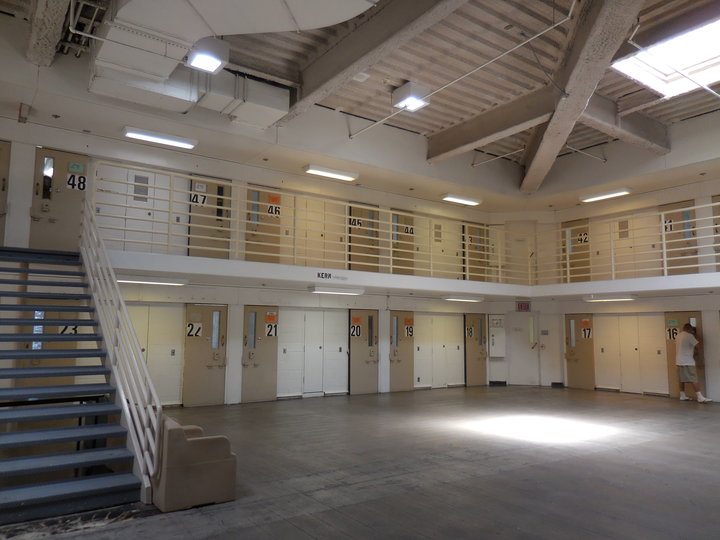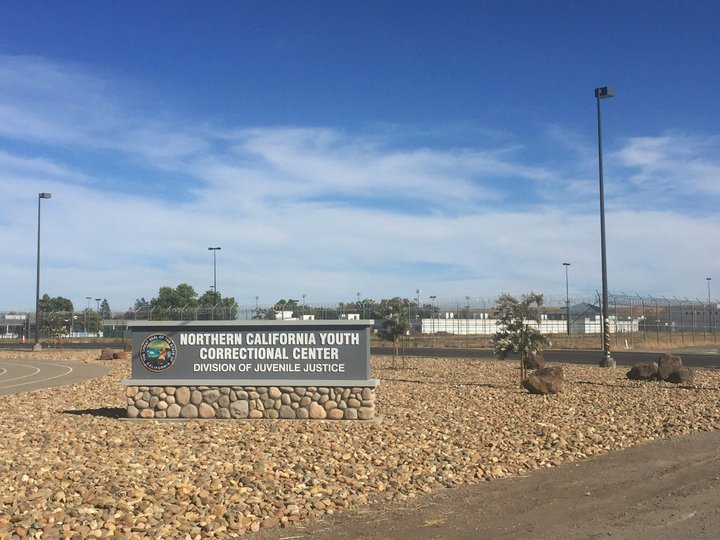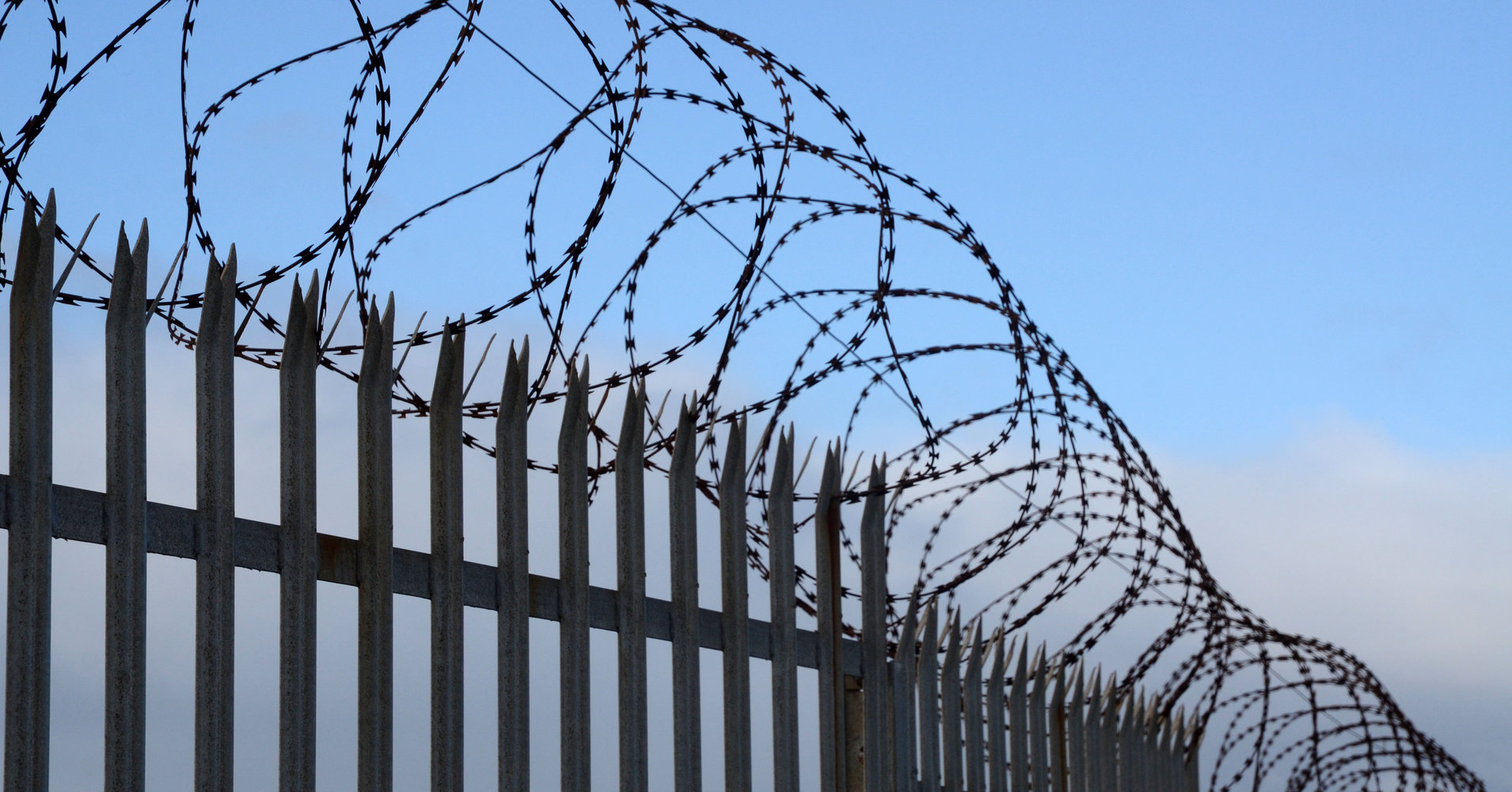[ad_1]
The mission statement of the California Division of Juvenile Justice — which houses about 650 of the state’s most serious juvenile and young adult offenders — says that the agency’s aim is to use “effective treatment, education and interventions in order to encourage positive lifestyles, reduce recidivism, strengthen families and protect our communities.”
But a new report paints a very different picture, one in which rampant violence, harassment and discrimination, inadequate mental health and educational services, and social isolation inflict new traumas on young people and leave them unprepared for adult life outside the system.
“Today, as it has for more than 100 years, the state system is failing youth, their families, and their communities, and is neglecting its most basic obligation: to rehabilitate young people and keep them safe,” reads the report, released Tuesday by the Center on Juvenile and Criminal Justice, a nonprofit organization focused on reducing U.S. reliance on incarceration.
The Division of Juvenile Justice (formerly known as the California Youth Authority), has been the subject of scandal for years and the target of numerous lawsuits.
The most recent suit, filed in 2003 by a woman whose nephew was a ward of the state, led to 13 years of court-ordered monitoring to document and address systemic abuse and dangerous conditions at DJJ facilities. The lawsuit was settled by consent decree in 2016, suggesting that problems had been solved and the system was on the path to improvement. But in the nearly three years since, the CJCJ report says, conditions haven’t changed — and some things have gotten worse.
All the wrongdoings and punishments that I have experienced made me realize that this [abuse] did not start with me but it has been going on long before my time.
a former inmate at N.A. Chaderjian Youth Correctional Facility in San Joaquin, California
A Culture Of Violence
By some measures, the juvenile justice system in California has come a long way in the last two decades. At its peak in 1996, the DJJ housed more than 10,000 kids and young adults ages 12 to 25. Legal reform and steep reductions in youth arrests have brought the population down 93 percent, stopping dangerous overcrowding in 11 locations across the state. Now fewer than 700 individuals — mainly youths of color 17 to 19 years old — are held in four facilities.
The DJJ population has gone down, but violence hasn’t decreased with it, according to data from the California Department of Corrections and Rehabilitation. In the three years since oversight ended in 2016, “dangerously high levels of violence have persisted,” and have in fact increased, the CJCJ report asserts. Each month on average, a third of incarcerated young adults were directly involved in violent incidents, including riots, beatings, forced sexual acts or fights, the report found. Youths reported intimidation tactics and provocation from correctional officers, inciting the brutality. Youth-on-youth attacks and attacks against youths have increased since 2011.
“Violence is heavy in there and it keeps the whole place bound,” one young person told the CJCJ.
Formerly incarcerated youths said correction officers would call them racist epithets and taunt them with random searches and unnecessary use of force. They recalled guards using restraint chairs for punishment and spraying them with chemical agents.
In just one year, from June 2017 to June 2018, there were more than 1,330 injuries to DJJ residents.

HuffPost spoke to one young man who was held from the ages of 16 to 20 at the N.A. Chaderjian Youth Correctional Facility in San Joaquin, California. He requested that HuffPost not reveal his identity. He was paralyzed from the waist down and said he was forced to exert strenuous physical effort to attend his classes, participate in activities and get to meals, all of which were in a different building from his Americans With Disabilities Act–compliant room. He described later being forced from that ADA-compliant room into an inaccessible facility alongside able-bodied youths, where he suffered falls and struggled just to bathe and get dressed in the morning.
He said he was routinely harassed by staff, who spewed racist and ableist epithets, and subjected him to random room searches and the use of isolation as punishment for initially refusing to leave his ADA-compliant dorm.
He added that he and other boys repeatedly wrote grievances about the harassment from guards but their complaints were ignored.
“All the wrongdoings and punishments that I have experienced made me realize that this [abuse] did not start with me but it has been going on long before my time,” he said. “It made us lose hope. It discouraged us a lot, you know.”
Attempted suicides, suicidal behavior and self-harm have increased since the consent decree was signed and the DJJ was released from the lawsuit. Since 2016, there have been at least 28 attempted suicides.
The CJCJ report alleges that kids who show signs of suicidal behavior are often placed in isolation cells that, though technically not considered solitary confinement, mimic those conditions. Solitary confinement is known to have adverse effects on mental health, and California has laws restricting its use for minors.
DJJ officials declined to comment on specific allegations but told HuffPost it “takes its responsibility to rehabilitate the offenders in their custody very seriously through education, rehabilitation, programs, treatment, services, and a committed staff.”
In January, Gov. Gavin Newsom (D) announced that he wants to move the DJJ from under the control of corrections officials and hand it over to the state’s Health and Human Services Agency. “We are committed about ending the juvenile justice system as we know it once and for all,” he said.
A spokeswoman for the Department of Corrections and Rehabilitation said in a statement provided to HuffPost on Tuesday that the move would “build on the progress of the last decade” and “continue to provide youth the treatment and skills that will allow them a successful transition back to their communities.”
California is far from the only state wrestling with these problems. Across the country, there have been more than two dozen ongoing or newly filed lawsuits in the past year concerning juveniles in the criminal justice system.
“Any state that is running a prisonlike facility for kids is going to have abusive situations for kids,” said Nate Balis, a juvenile justice expert at the Annie E. Casey Foundation, a nonprofit focused on child welfare. “The data is overwhelming. Most states, since the turn of the century, have experienced systemic maltreatment of kids.”
Children and young adults in communities from California to New York are being released, burdened by trauma and without the skills to succeed and assimilate back into life outside jail-like walls.

Lasting Abuses
“When we have a system that is frequently returning kids home with layers of trauma and layers of challenges, rather than rehabilitation like they’re supposed to, it’s a problem for all of us,” said Maureen Washburn, a policy analyst at the CJCJ and a co-author of the report.
As many as 75 percent of the young adults who are released from the DJJ are arrested again within three years.
After his release, the young man who had been confined in the San Joaquin facility said the constant abuse he endured hindered his assimilation into home life.
“I wasn’t even happy when I got out. … I was in a state of shock. I found myself asking permission to my family if I can use the bathroom. At restaurants I didn’t know how to order food,” he recounted. “Things like this are what I really struggled with, based on the fact I was a 16-year-old kid who first went to DJJ and was released as a 20-year-old adult, which — I still felt like that 16-year-old kid. Things have gotten better for me, but I still struggle.”
In addition to the emotional scars of their confinement, kids are left without the education they need to succeed. The DJJ spends $24 million on approximately 300 students in its high school program each year — about $75,000 per pupil, compared with $11,000 per student in California’s K–12 public school system. Yet the agency’s three high schools consistently show low levels of academic achievement.
Across the three schools, test results showed that fewer than 8 percent of students were proficient in reading, and there wasn’t a single student proficient in math.
“You can get your diploma like this because the homework is so easy there,” one former student told the CJCJ. “It’s baby homework. They’re not teaching them anything.”
On top of the problems at the facilities, experts say the facilities themselves are detrimental: Youths are done a serious disservice to be shipped to massive, isolated, prisonlike compounds, often hours away from their families.
“Youth need to be connected with a network of support,” said CJCJ communications and policy analyst Renee Menart, who co-authored the report. “The solution is two-part: having an independent oversight body … and bringing youth closer to home.”
Amid these allegations, Tuesday’s statement from the Department of Corrections and Rehabilitation defended the institution.
“While we acknowledge that the Division of Juvenile Justice works with some of California’s most challenged youth, DJJ has been on the frontline of reforming the way juveniles serve their time through education, programs, effective treatment and mental health services,” the statement read.
But Washburn said the problem is foundational: The department’s approach to treating youth offenders is fundamentally ineffective and damaging.
“Young people don’t fare well when they’re in large congregate facilities like the DJJ,” Washburn said. “Community-based services that are culturally rooted, close to home, involve families, rather than exclude them — that’s what works.”
[ad_2]
Source link

